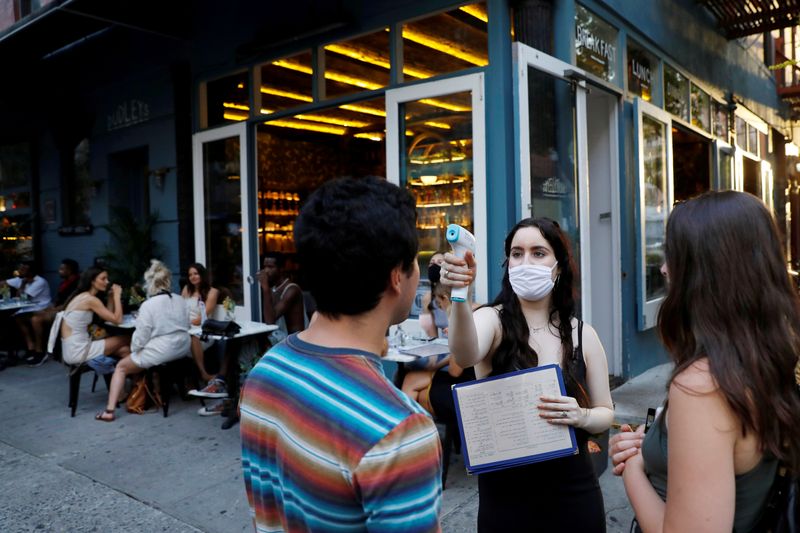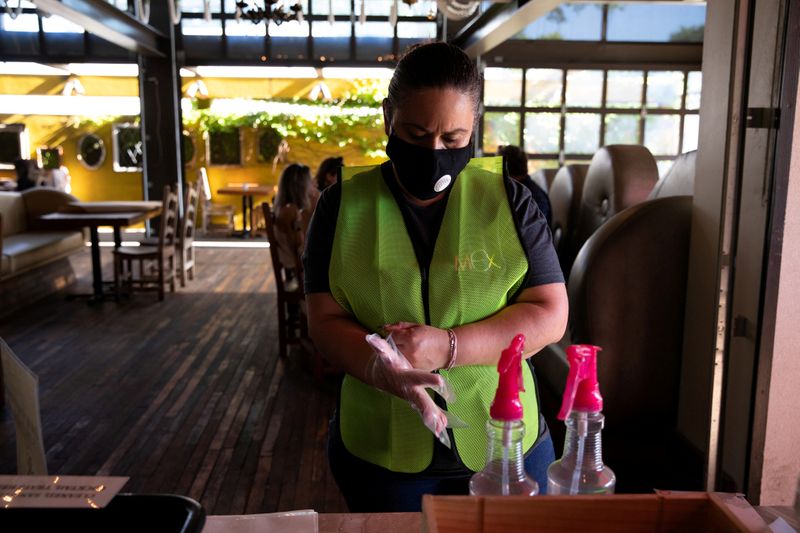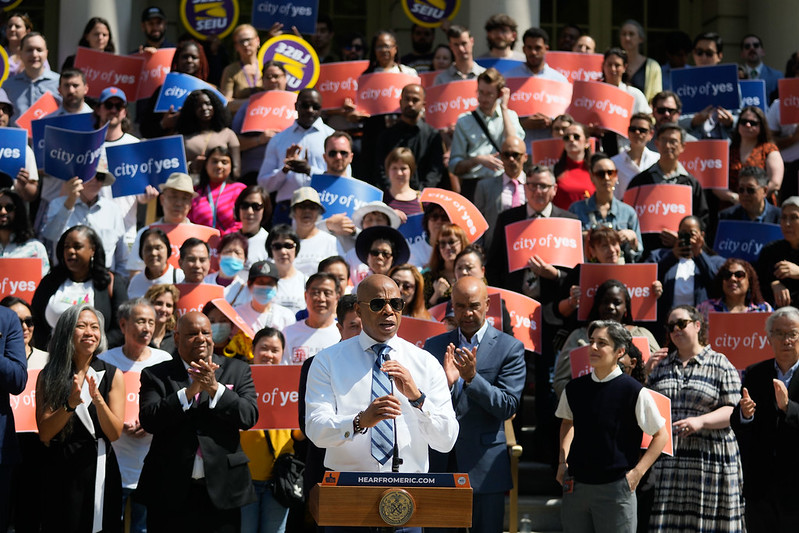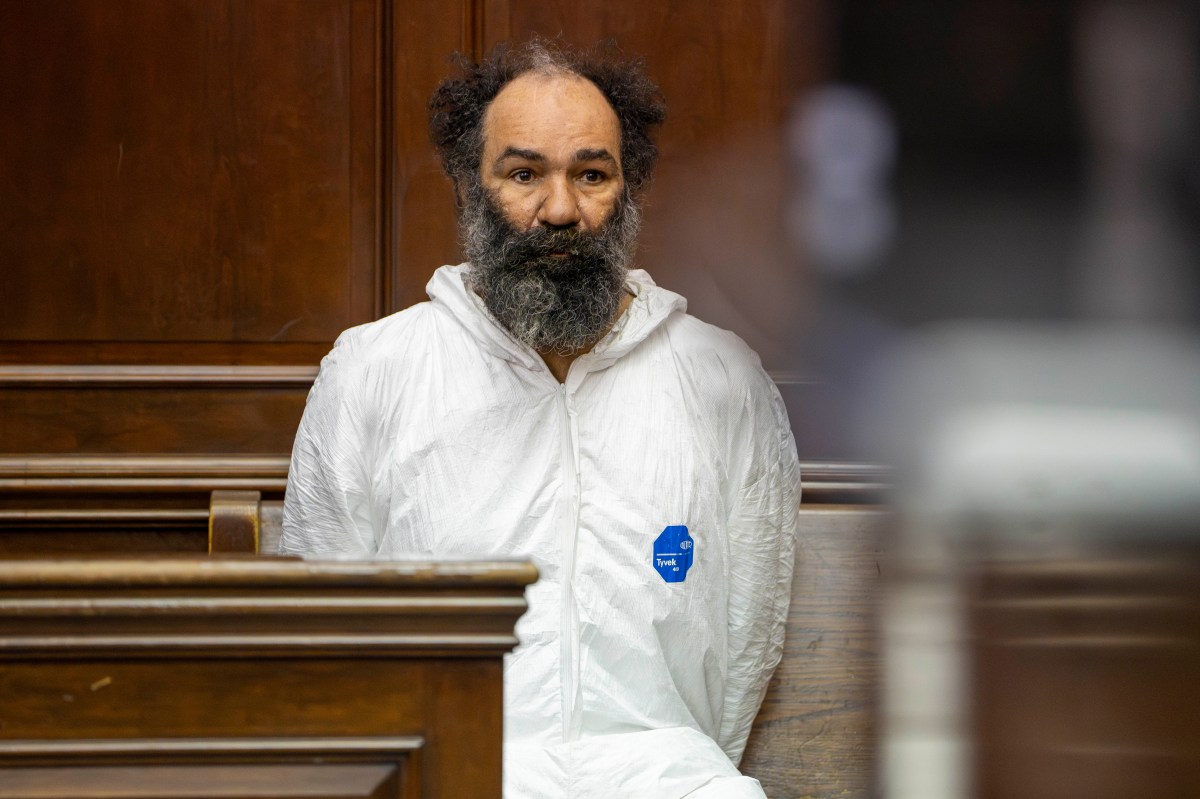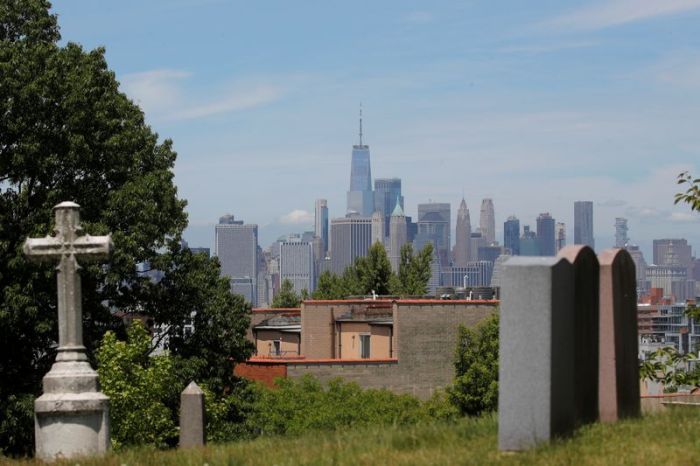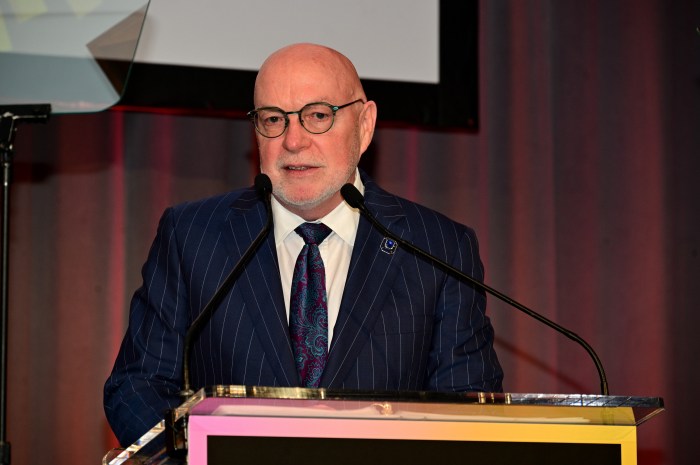WASHINGTON (Reuters) – U.S. private payrolls increased less than expected in June as reopening businesses showed little urgency to rehire workers and employers announced more than 170,000 layoffs, bolstering views the recovery from the COVID-19 pandemic would be a long slog.
Other data on Wednesday showed manufacturing activity rebounding in June, hitting its highest level in 14 months as firms and businesses resumed operations. But a surge in coronavirus cases across the country, including the populous California, Florida and Texas, threaten the budding recovery.
Several states are scaling back or pausing reopenings, and
the record number of infections has consumers growing ever more anxious.
The economy slipped into recession in February.
“A resurgence of the virus is likely to lead to another pause in economic activity over the near-term,” said Scott Anderson, chief economist at Bank of the West in San Francisco.
The ADP National Employment Report showed private payrolls increased by 2.369 million jobs last month. Data for May was revised up to show payrolls surging 3.065 million, in line with a surprise rebound in job growth reported by the government, instead of tumbling 2.76 million as previously estimated.
Economists polled by Reuters had forecast private payrolls increasing by 3.0 million in June.
Job growth has rebounded mostly as companies rehired workers laid off when businesses were shuttered in mid-March to control the spread of COVID-19. But some companies are struggling with weak demand forcing them to lay off workers.
A separate report from global outplacement firm Challenger, Gray & Christmas on Wednesday showed employers announced 170,219 job cuts in June. Though layoffs last month were down 57% from May, they jumped 306% compared to June last year.
“We are beginning to see the impact of the recession spreading to companies that were not directly impacted by the virus,” said Andrew Challenger, senior vice president at Challenger, Gray & Christmas. “At the same time, companies that attempted to reopen but were only able to attract a fraction of their pre-COVID customers are closing down again. Meanwhile, a number of high-profile companies are filing for bankruptcy.”
According to Challenger, Gray & Christmas, layoffs totaled an all-time high of 1.238 million in the second quarter, up 257% from the January-March period.
A third report, from the Institute for Supply Management (ISM), showed its index of national factory activity jumped to 52.6 last month from 43.1 in May. That was the strongest since April 2019 and ended three straight months of contraction. A reading above 50 indicates growth in manufacturing, which accounts for 11% of the U.S. economy.
Economists had forecast the index rising to 49.5 in June. (Graphic: Rebounding from the COVID-19 crunch, https://fingfx.thomsonreuters.com/gfx/mkt/gjnpwwjzdpw/Pasted%20image%201593607949970.png)
Manufacturers welcomed the reopening of the economy, but worried that the recovery was “slow” and “supply could be hindered if another wave of COVID-19 hits in the fall.”
The survey’s measure of factory employment contracted for an 11th straight month and the ISM noted that “long-term labor market growth remains uncertain.”
“The jump may just reflect the relief about reopening rather than signal a full rebound for a sector that still faces major headwinds,” said Tim Quinlan, a senior economist at Wells Fargo Securities in Charlotte, North Carolina. “Factories are not laying off workers to the extent that they were in May, but major rehiring is not happening yet.”
Stocks on Wall Street were trading higher. The dollar fell against a basket of currencies. U.S. Treasury prices were lower.
DEEP HOLE
The ADP report, jointly developed with Moody’s Analytics, was published ahead of the government’s more comprehensive employment report for June scheduled for release on Thursday. U.S. financial markets and the government will be closed on Friday in observance of Saturday’s Independence Day holiday.
The ADP report has a poor track record forecasting the private payrolls component of the government’s employment report because of methodology differences. It failed to predict the rebound in job growth in May. The government nonfarm payrolls count is compiled from a survey of businesses while the ADP figures are derived from ADP payroll data and other inputs.
According to a Reuters survey of economists, the employment report will likely show private employers hired 2.9 million workers in June. That would lead to nonfarm payrolls increasing by 3 million on top of the 2.5 million created in May.
Still, payrolls would be about 16.6 million below their pre-pandemic level. The jobless rate is forecast dipping to 12.3% from 13.3% in May.
Employment gains in the ADP report last month were led by the leisure and hospitality industry as restaurants and bars reopened. There also were strong job gains in the healthcare and construction sectors. But mining payrolls fell and manufacturing employment increased moderately. (Graphic: Where the jobs are and aren’t returning, https://fingfx.thomsonreuters.com/gfx/mkt/azgvoraegpd/Pasted%20image%201593608311700.png)
“While the jobs recovery is encouraging, it’s disconcerting that it’s solely based on the rehiring of workers by businesses reopening,” said Mark Zandi, chief economist at Moody’s Analytics. “The hiring related to businesses reopening will dry up and we might see a weakening in job growth.”
(Reporting by Lucia Mutikani; Editing by Chizu Nomiyama and Andrea Ricci)



